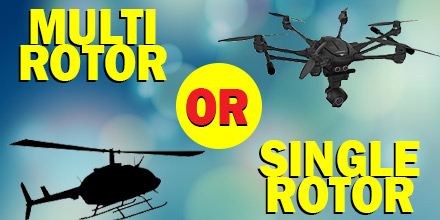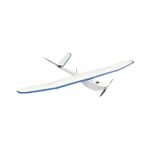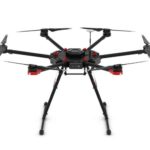
Although multi-rotor drones get most of the attention in the UAV world today, they’re not the only option for a flight project. But why would someone choose a multi-rotor over a single-rotor...or vice versa? Read on to learn the differences between the two, as well as their strengths and weaknesses.
A key difference between the two, not surprisingly, is the number of rotors each offers. A multi-rotor aerial vehicle has several rotors that keep it airborne. In contrast, a single-rotor vehicle has one rotor plus a tail rotor to control its heading.
Multi-Rotor
A multi-rotor is a good choice for operators who need to get a camera in the air for a short period of time. Multi-rotor drones are best for aerial photography and aerial cinematography.
One of the advantages a multi-rotor is its high-degree of control over position and framing for aerial shots. However, a downside is speed and endurance limitations. Multi-rotor's high-level of stabilization comes with a constant need for fast and high-precision throttle changes. As such,
Rules of aerodynamics dictate that the larger a rotor blade, the slower it spins, resulting in more efficiency. As such, a quad-copter is more efficient than an octo-copter but less efficient than a single-rotor.
Flight time isn’t due to battery, but rather weight. There are options to help increase flight duration and payload capacity.
A brushless motor for a heavy-lift electric multi-rotor is the best option for longer flight time and zero-vibration operations.
If an operators wants the drone to stay airborne longer with a more substantial camera attached, a brushless motor for heavy-lift electric multi-rotor is your best option for longer flight time and zero-vibration operation.
Single-Rotor
A single-rotor helicopter or other airborne tech project offers greater efficiency than a multi-rotor. Currently, single-rotor vehicles fill a small niche in the drone world.
Single-rotors offer certain advantages. Remember the rules of aerodynamics? A single-rotor helicopter allows for longer blades to enable slower spinning and therefore expend less energy. Some applications require extended hovering, heavy payloads and/or long endurance. In these instances, a single-rotor may be the right option.
However, single-rotor helis also have disadvantages.
One knock is that they have significantly more vibration than a multi-rotor UAV. The larger blades also pose more danger. If a single-rotor UAV loses its overhead blade, the aircraft doesn't feature the fail safe of additional propellers.
Whether flying a multi-rotor or a single-rotor, quality parts and components are vital for safety and performance.
KDE Direct offerings
From pocket quad-copters for public safety to scanning depths of the ocean floor,
KDE Direct constructs durable and efficient brushless motors and propeller blades for various applications. KDE Direct designs large motors, such as the KDE8218XF-120, for heavy lift down to miniature motors.
KDE Direct UAS Multi-Rotor Brushless Motor Series is designed for UAS applications. These high-quality engineered motors provide zero-vibration operation for hours of maintenance-free usage and market-leading performance. The motors are tuned and optimized for the KDE Direct UAS Multi-Rotor Electronic Speed Controller Series.
KDE Direct is a worldwide leader in single-rotor brushless motors. The Generation 3 series uses top-tier materials and manufacturing processes to take the limits of efficiency, flight performance, and maintenance-free durability to new heights. The "G3" series provides state-of-the-art technology and performance-enhancements for the single-rotor marketplace and UAS applications.
 What lies between the Pacific coasts of Japan and Silicon Valley?
About 4,500 miles of ocean, of course! A distance easily traveled by commercial airlines but certainly beyond the reach of non-military drones.
But is that about to change?
Yes. If, that is, a winner emerges from the Pacific Drone Challenge.
What lies between the Pacific coasts of Japan and Silicon Valley?
About 4,500 miles of ocean, of course! A distance easily traveled by commercial airlines but certainly beyond the reach of non-military drones.
But is that about to change?
Yes. If, that is, a winner emerges from the Pacific Drone Challenge.

 Although multi-rotor drones get most of the attention in the UAV world today, they’re not the only option for a flight project. But why would someone choose a multi-rotor over a single-rotor...or vice versa? Read on to learn the differences between the two, as well as their strengths and weaknesses.
A key difference between the two, not surprisingly, is the number of rotors each offers. A multi-rotor aerial vehicle has several rotors that keep it airborne. In contrast, a single-rotor vehicle has one rotor plus a tail rotor to control its heading.
Although multi-rotor drones get most of the attention in the UAV world today, they’re not the only option for a flight project. But why would someone choose a multi-rotor over a single-rotor...or vice versa? Read on to learn the differences between the two, as well as their strengths and weaknesses.
A key difference between the two, not surprisingly, is the number of rotors each offers. A multi-rotor aerial vehicle has several rotors that keep it airborne. In contrast, a single-rotor vehicle has one rotor plus a tail rotor to control its heading.


 Multi-rotor Considerations
Multi-rotor Considerations